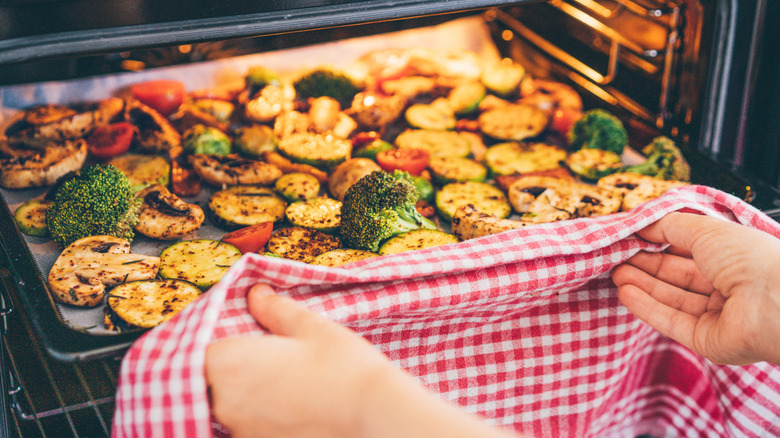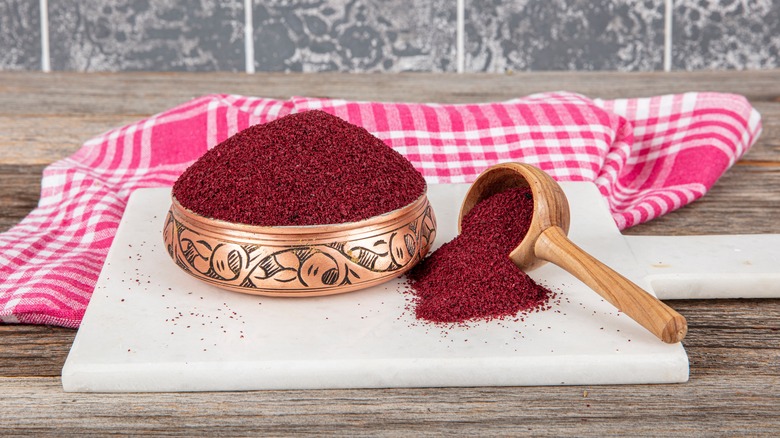Add One Unexpected Spice To Roasted Veggies For A Citrusy Pop
Sumac is an ancient spice used widely throughout Mediterranean, Middle Eastern, and North African cuisines. Made from the plant's red berries, the fruit gets dried and then crushed into powder. It has a delicious tanginess closely resembling lemon with a hint of fruitiness. It's typically used on grilled meats and kebabs as a tenderizer along with a tangy burst of flavor. It's commonly added to sauces, dips, dressings, and sprinkled on salads, like Lebanese fattoush, and is one of the main ingredients za'atar seasoning is made of. You can also use sumac to add an unexpected citrusy pop to roasted vegetables — where its complex flavors really come through and elevate whatever veggies it's cooked with.
Roasting vegetables, especially to the point where they're nice and caramelized, brings out their inner sweetness. Sumac's tart flavor perfectly matches these sweet undertones, and is further enhanced with the addition of sugar, which helps roasted vegetables caramelize quicker.
Use sumac on its own or blended with other complementary herbs and spices. Cinnamon, in particular, goes well with sumac as a balance for its acidity, taking a hint from the Moroccan spice blend Ras el Hanout, which often includes both. Sumac can be added to vegetables directly as a seasoning, or you can make a sauce for marinating the veggies in before roasting. Try it as a finishing garnish instead of lemon zest, or mix it into an easy yogurt spice sauce to drizzle on top of the vegetables or serve as a dip.
Sumac is the tart lemon alternative your vegetables need
Sumac is one of those uncommon spices that will impress everyone you cook for. It has the best aspects of citrus without turning bitter or sour. Its dark red color also adds an appetizing touch to otherwise bland-looking foods.
While lemon brings a unique, fresh flavor to veggies, sumac's citrus-adjacent flavor hits those same notes but without having to add liquid. This is especially useful when working with vegetables that already release plenty of fluid on their own, such as zucchini, eggplant, tomatoes, or mushrooms. That's one of the main reasons that sumac is Alton Brown's secret weapon ingredient for fried foods ... it brightens the flavor of greasy foods without dampening crispy coatings.
A good segue between fried and roasted vegetables is potatoes — as in oven-baked french fries. These can easily go from standard to spectacular with a generous shake of sumac, as it gives a lovely boost to starchy foods. Carrots also greatly benefit from being roasted with sumac, as the sweet veggie truly shines with a hit of acidity.
These and other roasted veggies get an effortless upgrade when you preheat your sheet pan before putting them into the oven. This will start them caramelizing immediately, which is exactly what you want when cooking with sumac. If you just can't get enough of the spice's citrusy goodness, you can also use sumac to transform your desserts or make a sumac simple syrup for blending into cocktails.


